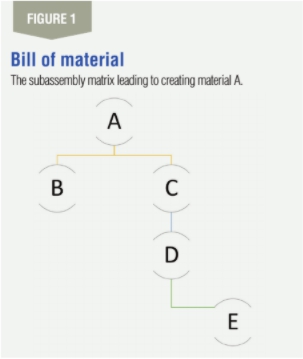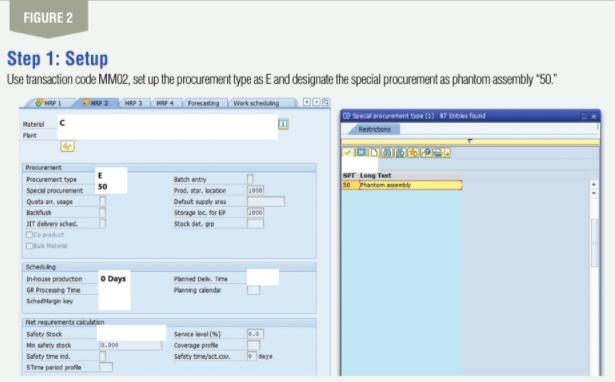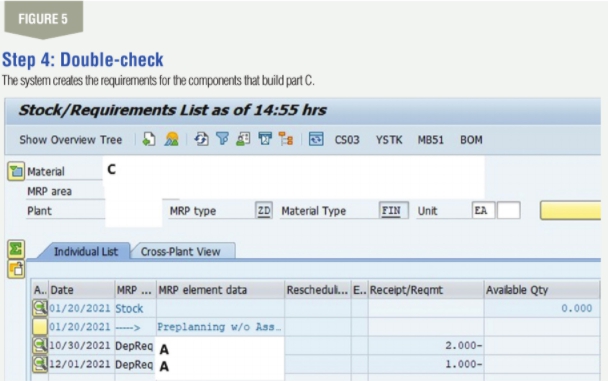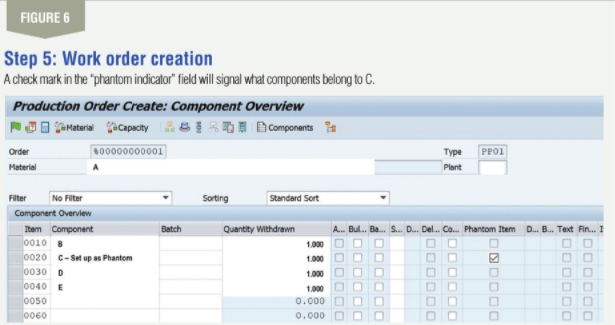Phantom Assembly Tool Cuts Manufacturing Lead Times, Increases Cost Efficiency
Phantom Assembly Tool Cuts Manufacturing Lead Times, Increases Cost Efficiency
ISE Magazine March 2021 Volume: 53 Number: 3
By Ilyani Sanchez
https://www.iise.org/iemagazine/2021-03/html/sanchez/sanchez.html
In the challenging oil and gas industry, small process improvements can have a big impact on profitability. Any efficiency that saves time and money contributes to the economics of a project for manufacturers, suppliers, contractors and clients, encouraging personnel to continuously seek ways to streamline operations.
Since the 1960s, companies in diverse industries have relied on enterprise resource planning (ERP) software from globally recognized providers such as SAP, Oracle, SYSPRO, NetSuite, Cetec and others to make their business processes run smoothly. But as the technology has developed, so has the array of available programs. With innovation, some excellent systems that incorporate APICS inventory and production management principles may fall out of use as warehouse managers seek to keep up with the newest tools.
One program that should be in every manufacturing supervisor’s virtual toolbox is the phantom assembly or phantom bill of material (BOM), defined as representing an item that is physically built but rarely stocked before being used in the next step or level of manufacturing. The lead time is set to zero and the order quantity to lot-for-lot.
Identifying the problem

How does a phantom assembly fit into the inventory workflow? As illustrated in Figure 1, imagine we have a bill of material for part A, which is a part made from parts B and C, but C needs a subassembly made of parts D and E. In theory, to manufacture material A, you will need to have parts B and C already built and in-stock, but this raises these issues:
- You will require more warehouse storage space to accommodate bin locations for the assembled parts C, D and E.
- You will be adding another part number/material to your inventory, and this will have to be counted either through cycle counts or in the yearly physical inventory depending on how your company has set up their inventory policy.
- The consumption of part C will in most cases depend on demand for A, which could lead to excess stock if you build a quantity of C to meet orders that may subsequently be canceled.
Compounding these problems, the administrative work and the subsequence processes that the subassembly will have to pass through to make it to produced stock lengthens the cumulative lead time for building part A.
The solution for these issues is the phantom assembly tool, which enables you to simultaneously build material A and sub-assembly C.
Configuring the tool
For this example, the following figures depict the SAP tool for illustrative purposes. While specific codes and steps may vary with different software providers, conceptually the tools are aligned around APICS principles and the efficiencies gained with the phantom assembly.
In Step 1, first, we must configure the material master. Using our bill of material from Figure 1, we identify material C as the subassembly so the system will recognize it as a phantom assembly.

As depicted in Figure 2, we use transaction code MM02, set up the procurement type as E and designate the special procurement as phantom assembly “50.” The lead time is zero, so in the field for “In-house production” we indicate “0 days.” The rest of the parameters on this screen can remain as defined by your organization.

On the same transaction, select the “Costing 1” tab (Figure 3) to tell the system how to structure the cost; on the field for “SpecProcurem Costing,” set the key to “50.” Following the example in Figure 1, once this is set up, the system will skip the subassembly cost and pull the individual cost of D and E into the cost of material A.
Be aware that the routing of material A must be changed to factor in the time and operations that you will need to build subassembly C at the same time you are building A. If the routing used to be set as “assemble B and C,” the routing must be adjusted to add “build C first.” Although the standard parameters in the routing will not change, you must add the operations for the subassembly, so the system can properly calculate the total cost of A (see Figure 4).

After configuring the tool, you can double-check that it is correct. Note that at transaction code MD04 (Figure 5), the system will replace the planned orders required to build subassembly C with what I call a bridge that indicates “Planning w/o Assembly.” This means the system is creating the requirements for the components that build C, but it knows that C will be built at the same time as A.

In addition, when creating the work order to get material A assembled, the components overview will identify part C with parts B, D and E, but a check mark in the “phantom indicator” field will signal that it is there to reference what components belong to C (Figure 6).

In implementing the phantom assembly, remember that these two steps are critical: First, update the material master to let the system know how you want to manage the materials; then update the routing associate to the final assembly to show the operations related to the subassemblies.
Saving time and money
How does the phantom assembly reduce lead time and manufacturing cost? As we revisit Figure 1, we can analyze the cumulative lead time for material A before using the Phantom Assembly tool. The chart below shows a lead time total of 50 days, because material D will take 30 days before it is available to make subassembly C, which then requires 15 days of lead time before it is in stock; then you need five more days to put B and C together. In the lead time to build C, imagine that three of the 15 days are related to administrative work such as pulling materials out of the warehouse, filling up a checklist, giving a pass to stock, etc. For A’s lead time, two out of the five days are related to setting up so it can be assembled with B.

In this example, we took one material (A) with just one sub-assembly, but consider parts with multiple subassemblies. They will certainly have many operations that do not add value and can therefore be consolidated to increase savings even further.
With the phantom assembly tool, these extra administrative operations related to part C’s subassembly, plus setup time, are reduced automatically, since the routing for material A will be designed around those reductions and will eliminate the repeated operations mentioned above. Since “time is money,” reducing the lead time reduces labor hours and other direct costs, as well as some indirect costs associated with setup times and other process factors such as wait times.
The phantom assembly is a versatile tool designed to reduce the total lead time of a product that incorporates one or more subassemblies by reducing extra administrative steps and consolidating operations and costs. I have found that in manufacturing environments, where lead time and cost are the key-stones to success and every dollar saved is a “win,” the phantom assembly tool is a cost-effective way to improve operations by streamlining manufacturing and warehouse processes.

